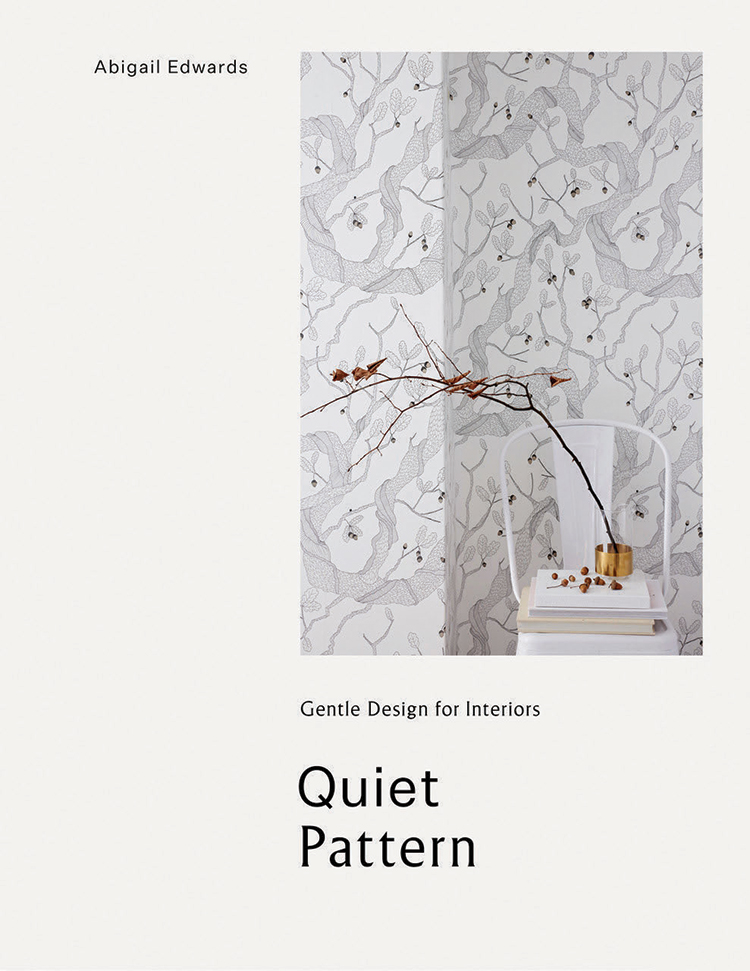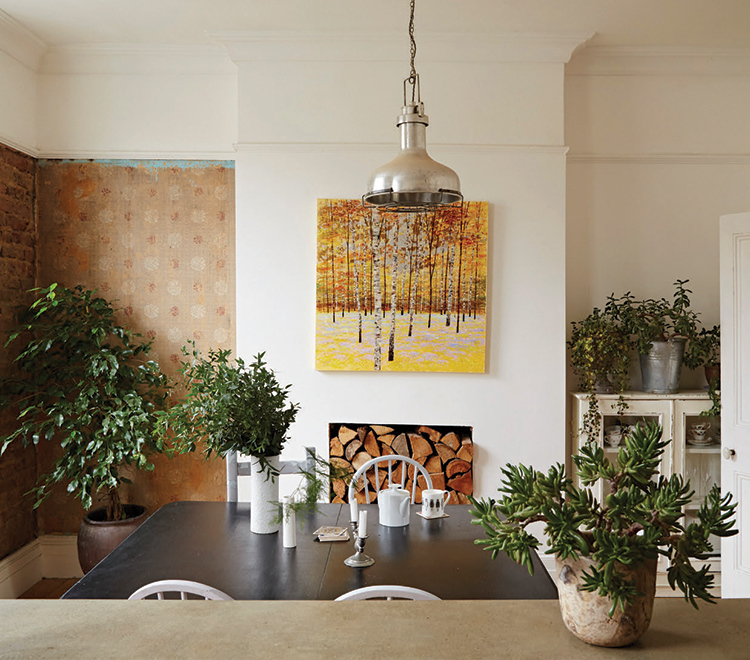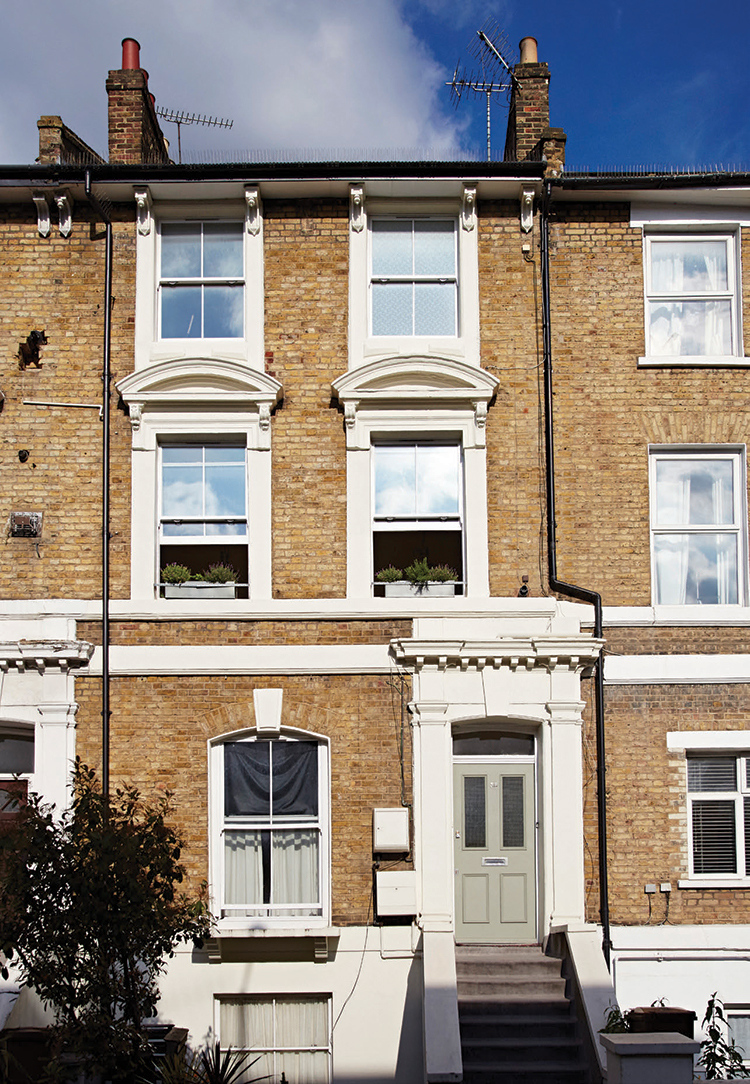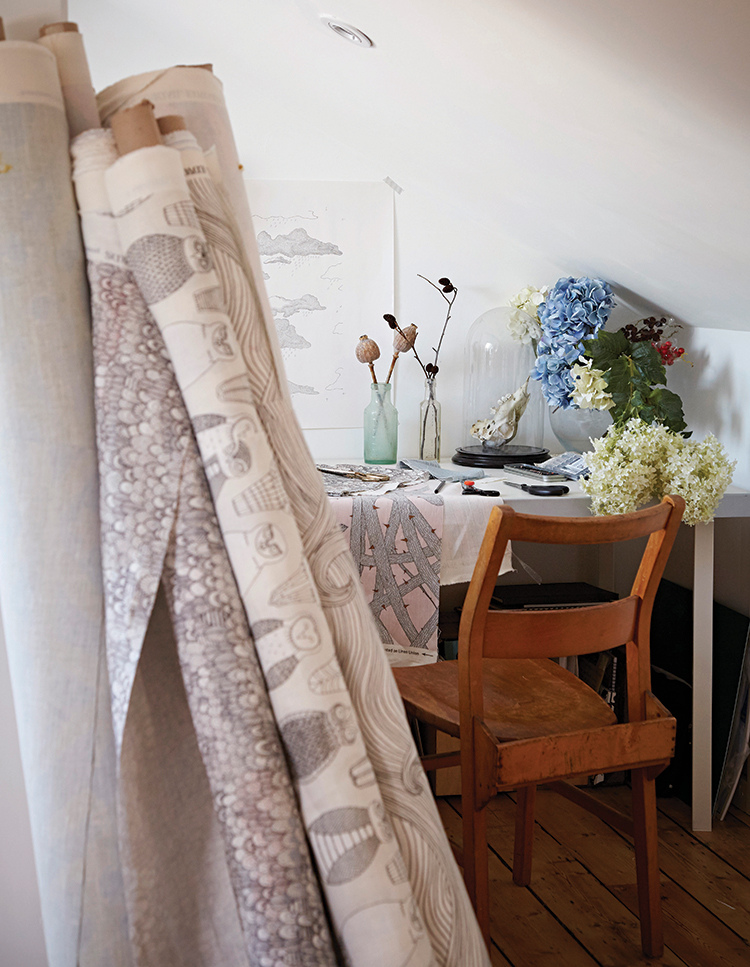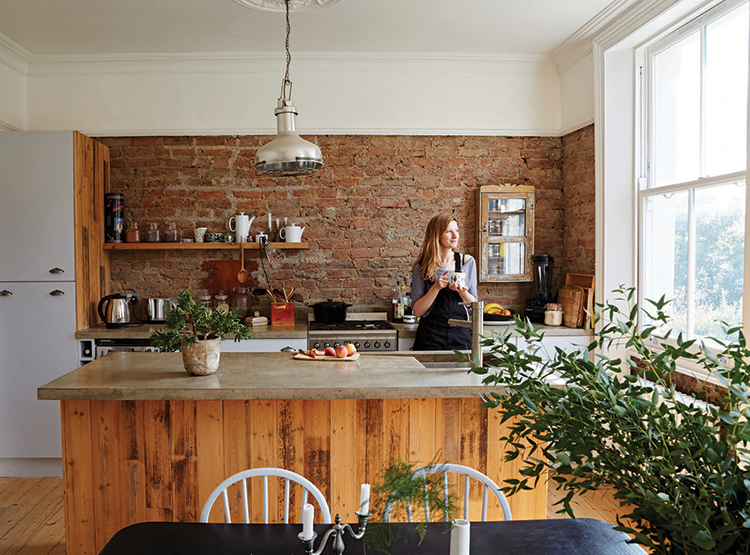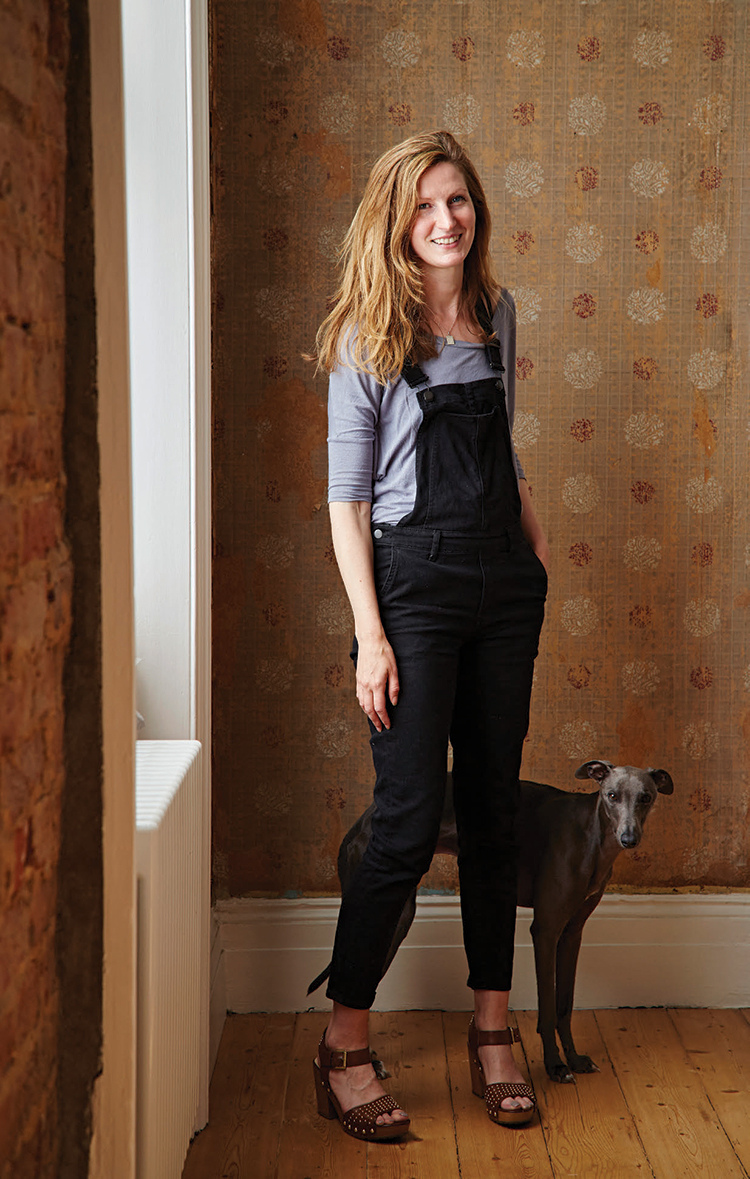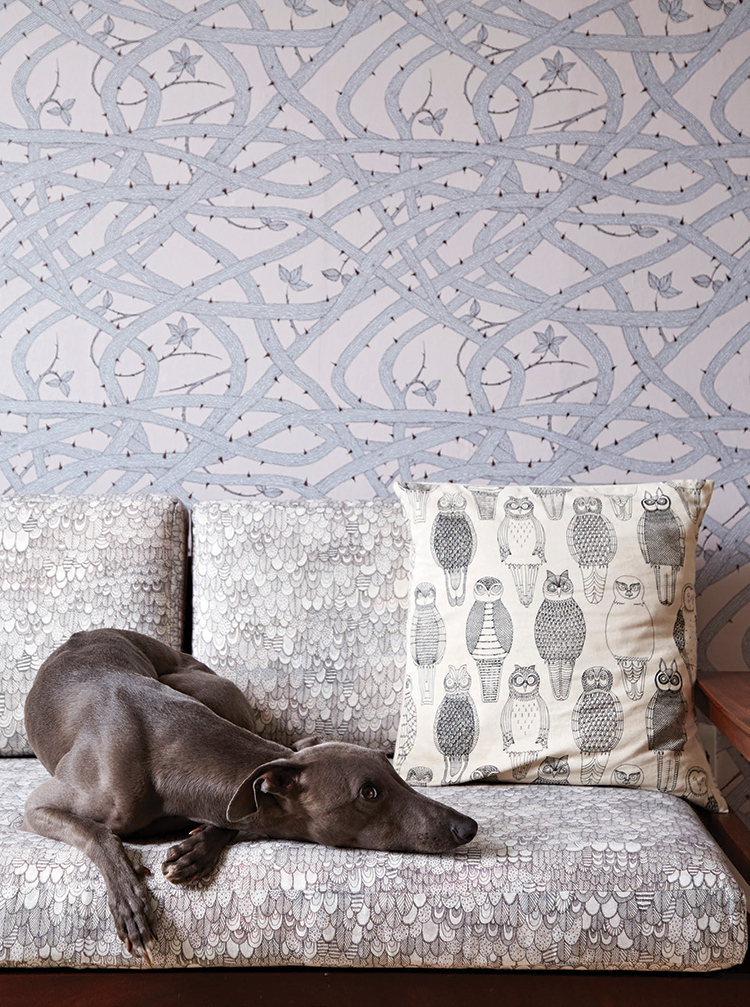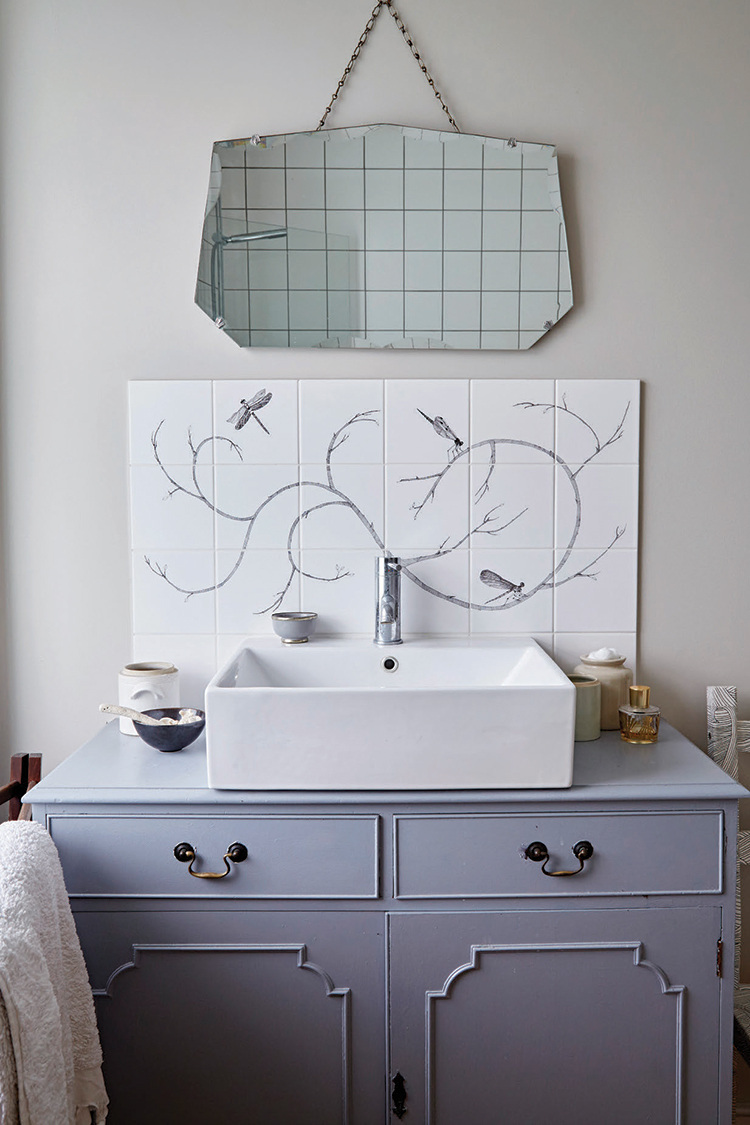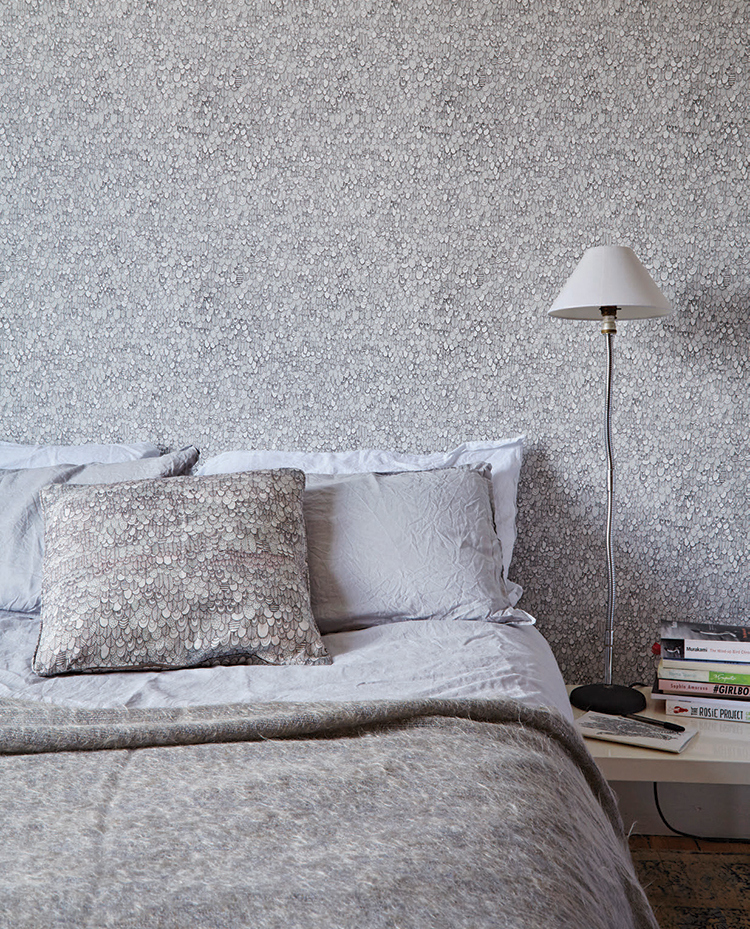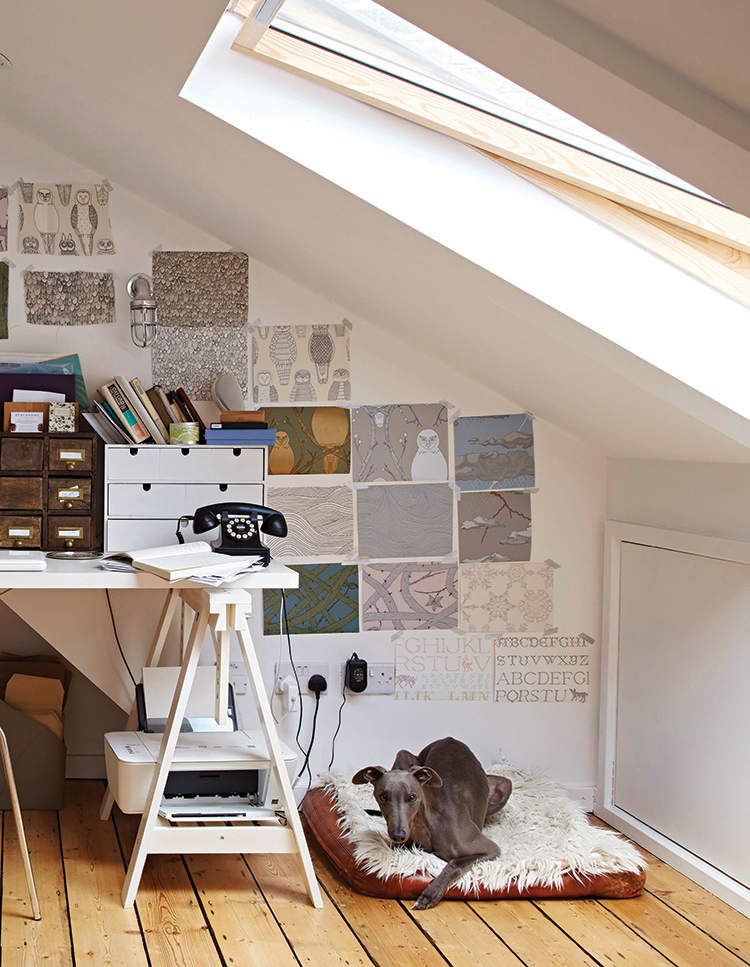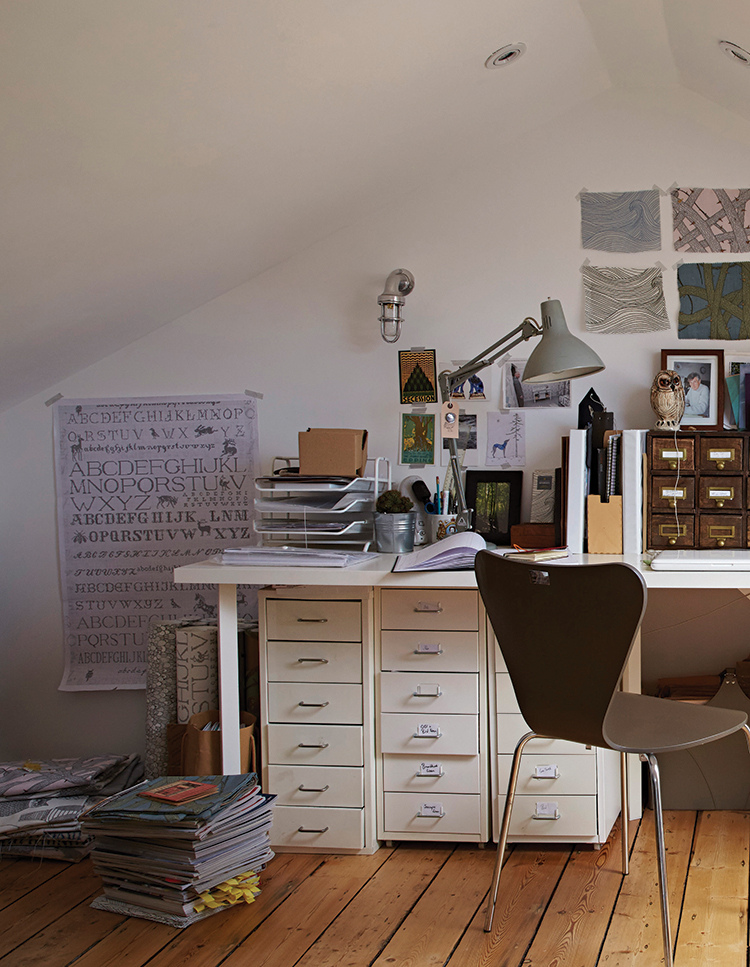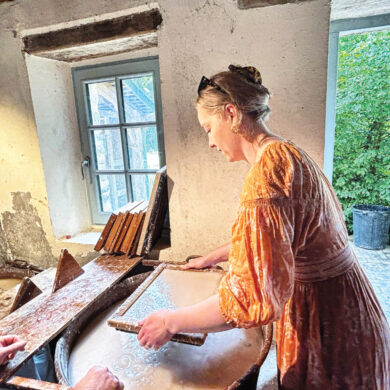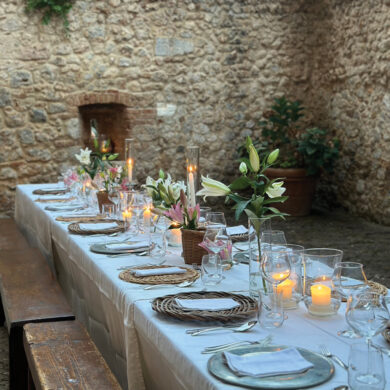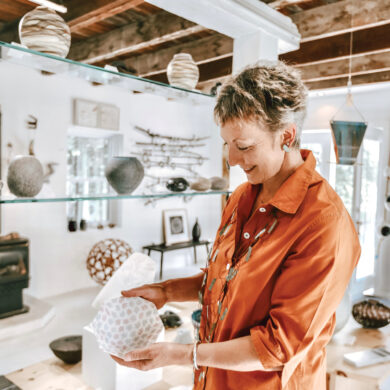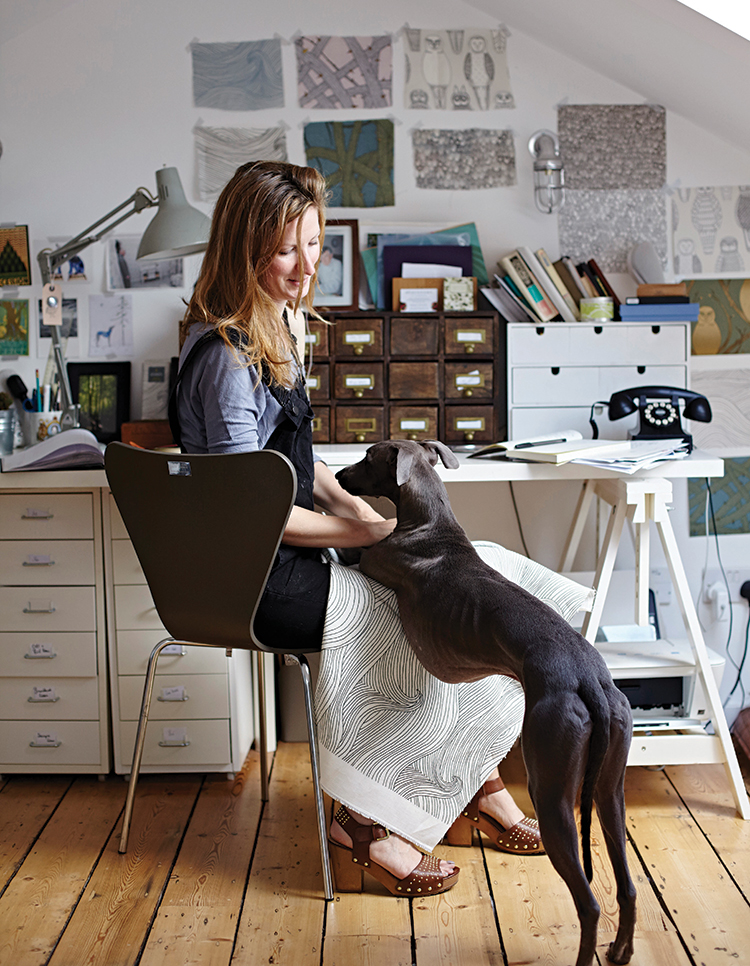
I grew up in a very rural part of Gloucestershire in the southwest of England in a tiny village surrounded by woodland. I think the experience of growing up in a fairly isolated environment enveloped in nature had a big impact on me, although I was unaware of this at the time. I took the trees, fields and fauna for granted. But, after moving to London to study fine art at Wimbledon College of Arts, being able to escape from the city and have space to breathe and hear the wind in the trees is something I crave.
After art school, I moved to New York to assist in galleries briefly before returning to London to try to become an interiors stylist. I went from internships at various magazines to assisting stylists, before finally becoming a freelance stylist myself while holding a deputy decorating editorship at “Country Homes and Interiors.” After several years at the magazine, I left to become completely freelance. During this time, I continued to do little pen illustrations whenever I had a moment. I was living in a small flat where there wasn’t room to paint, but I have always sketched anyway, and this took over from painting.
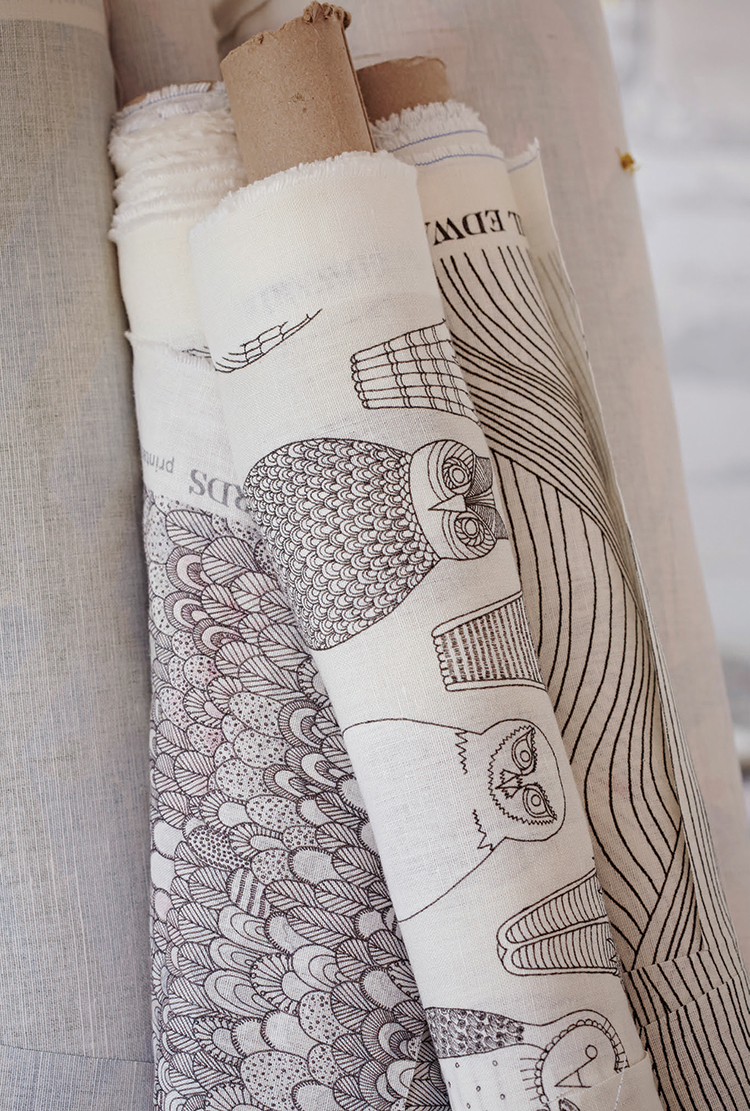
After styling for many years, the long days and constant travelling began to take a toll. While I still loved styling, the more commercial the work was, the less creative it became. I craved another creative outlet. One of the little owl drawings that I was working on at the time looked like it may work better as a pattern than an illustration, so I worked it into a repeat (not that I knew how to do this). But I thought it might work as a wallpaper. I didn’t have a business plan or high expectations; I just wanted to try it out and see what would happen. For the next several years, I reworked this owl sketch many times and added another owl design and a wave design. I didn’t have a clue what I was doing, but I knew I wanted to make the wallpapers in the United Kingdom in an ethically and environmentally responsible way. I launched the designs in 2011.
“The idea of stagnating creatively or from a business point of view terrifies me, so I like to keep thinking ahead.”
The family-run firm in Lancashire in the north of England where my designs are printed is one of the few remaining traditional printers in the United Kingdom. They use hand-mixed, non-toxic, waterbased inks, and the papers are all from a sustainable source. Seven years on, I still print all of my wallpapers there, and I have now added fabrics and accessories to the collection.
When I was working on my first designs, I was in a one-bedroom flat in Islington in North London. My computer was balanced on a filing cupboard, and I would draw at the kitchen table. I sold that flat and bought a crumbling three-bedroom flat just up the road in Newington Green. The ceilings were held up with scaffolding poles, there were huge cracks in the walls—one of which I could fit most of my arm into—and layers and layers of hideously patterned carpeted floors and wallpapered walls. Some rooms had six layers of paper, dating from the 1970s all the way back to their original Victorian designs. It was a building site for a long time, and it was really difficult to live there—let alone work. I had scraped all of the rotting plaster off the walls and taken up the carpet in one room. It also had secure ceilings, so the sun shone in. This became my temporary studio, and I designed my Brambleweb wallpaper in here. I think the design was unintentionally influenced by living in a Victorian terrace (most likely from my admiring all the old wallpapers, some of them dating to 1859, while I was scraping them off the walls). The twisting branches inspired by the story of “Sleeping Beauty,” for instance, took on Arts & Crafts-inspired shapes as they twisted to form a web of brambles.
“There is always a way.”
Later on, when the flat was nearly finished, I converted the old bathroom into a small studio and very happily worked in there for several years, until it became too cramped. I decided to add another floor and convert the attic into a studio.
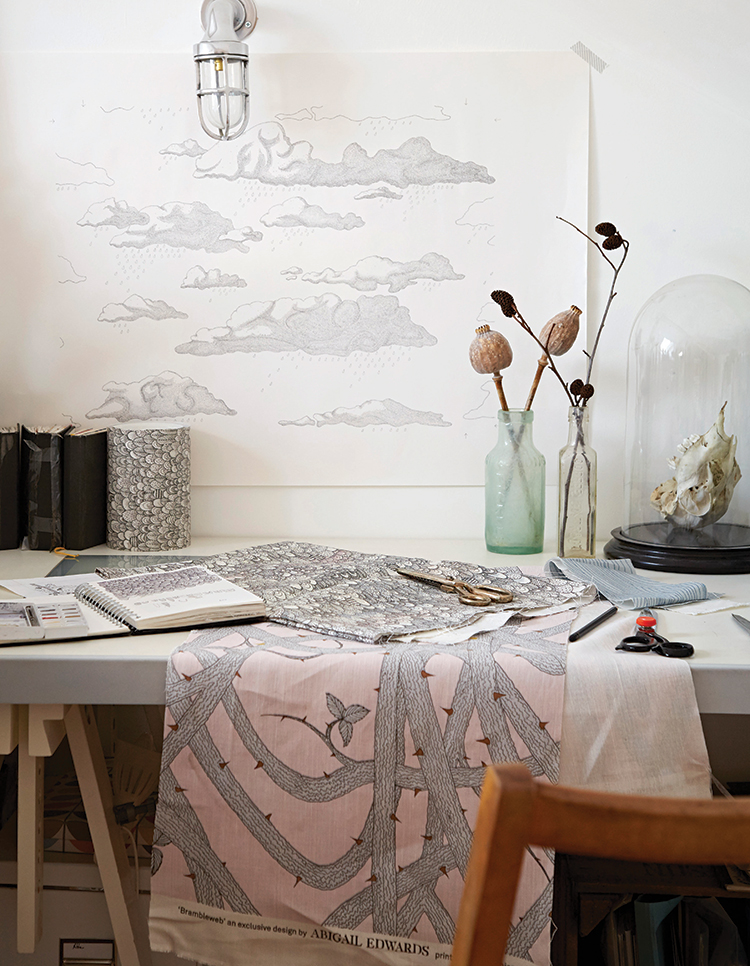
It isn’t huge, but it is really light and airy. There is a big glass panel that lets the light shine in from the skylights, and it is really peaceful. I live on a busy road with buses continually roaring past and police sirens going off, but when I am up in the studio, I can’t hear any of it. It is really calm, and I am completely focused. There is storage in the eaves, and I have a desk for admin at one end of the room and another for drawing and designing at the opposite end. It gets very messy in here when I am busy, but as soon as it is tidy, I feel superorganized and inspired!
Having a calm space enables me to focus on the creative side of my business, as well as to work out how to move it forward. I am really excited to be launching new rugs this spring in New York, as well as new wallpapers and cushion covers coming out later in the year. I have just written a book that launched in May, called “Quiet Pattern.” It is all about the beauty and benefits of gentle and calm design and was a really positive break from designing and styling. I interviewed lots of designers around the world who create wonderfully peaceful, unique pattern designs. Talking to them for the book about what inspires their work and how they run their businesses was hugely inspiring and reinforced the importance of community when you are running a creative business. I am soon planning to move back to the area that I grew up in. I think being surrounded by the nature that inspired me originally will be truly beneficial to my designs. It makes me excited for what I can create next.
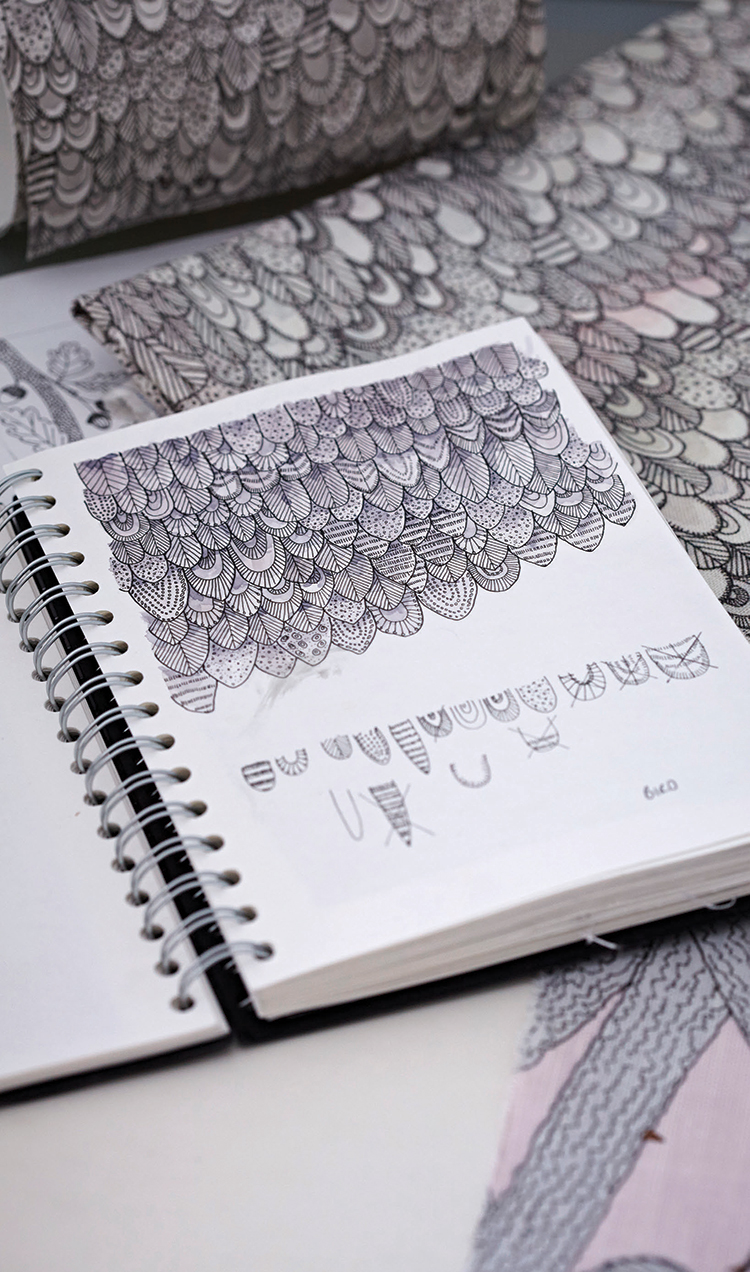
P.S. I Love This!
Sketchbooks. I have tiny sketchbooks with lots of scribbly notes and ideas that I won’t look at for ages, but then I may notice a drawing in one of them that recurs and will trigger an idea for a new design.
“All of my career has been inspired but not planned.”
